New Tunneled Buccal Fat Pad Flap for Palatal Reconstruction
Abstract
:Introduction
Surgical Technique
Discussion
- Avoids the overstress of flap tissue, that could lead to fragmentation of the flap and in a long term can lead ischemic necrosis at the edge, reducing the risk of partial flap loss, reported in some studies.[18]
- The pedicle included under the mucosal plane instead of directly located in the oral cavity allows a less bulk, that reduces patient’s discomfort and facilitates speech, feeding and swallowing.
- There is no tissue of the flap in masticator space, so this allows patients with partial or total mobile dental prostheses to use them immediately after surgery without compromise of the flap.
- Improves and accelerates healing compared with free graft BFP.[[2[3]
Conclusion
Funding
Authors’ Note
Conflicts of Interest
References
- Zhang, H.M.; Yan, Y.P.; Qi, K.M.; Wang, J.Q.; Liu, Z.F. Anatomical structure of the buccal fat pad and its clinical adaptations. Plast Reconstr Surg. 2002, 109, 2509–2518; discussion 2519–2520. [Google Scholar] [CrossRef] [PubMed]
- Racz, I.; Maros, T.N.; Seres-Sturm, L. Structural characteristics and functional significance of the buccal fat pad (corpus adiposum buccae). Morphol Embryol. 1989, 35, 73–77. [Google Scholar]
- Baumann, A.; Ewers, R. Application of the buccal fat pad in oral reconstruction. J Oral Maxillofac Surg. 2000, 58, 389–392; discussion 392–393. [Google Scholar] [CrossRef] [PubMed]
- Egyedi, P. Utilization of the buccal fat pad for closure of oroantral and/or oro-nasal communications. J Maxillofac Surg. 1977, 5, 241–244. [Google Scholar] [CrossRef] [PubMed]
- Hanazawa, Y.; Itoh, K.; Mabashi, T.; Sato, K. Closure of oroantral communications using a pedicled buccal fat pad graft. J Oral Maxillofac Surg. 1995, 53, 771–775. [Google Scholar] [CrossRef] [PubMed]
- Yeh, C.Y. Application of the buccal fat pad to the surgical treatment of oral submucous fibrosis. Int J Oral Maxillofac Surg. 1996, 25, 130–133. [Google Scholar] [CrossRef] [PubMed]
- Ibikunle, A.A.; James, O.; Adeyemo, W.L. Buccal fat pad for interpositional arthroplasty in temporomandibular joint ankylosis. J Maxillofac Oral Surg. 2019, 18, 382–387. [Google Scholar] [CrossRef] [PubMed]
- Koç, O.; Tüz, H.H.; Tosun, E. A novel use of buccal fat pad flap for immediate reconstruction of palatal tumor resection defect. J Craniofac Surg. 2019, 30, 593–595. [Google Scholar] [CrossRef] [PubMed]
- Colella, G.; Tartaro, G.; Giudice, A. The buccal fat pad in oral reconstruction. Br J Plast Surg. 2004, 57, 326–329. [Google Scholar] [CrossRef] [PubMed]
- Mohan, V.; Nair, R.U.; Usha, A.M. Versatility of tongue flaps for closure of palatal defects—case report. J Clin Diagn Res. 2017, 11, ZD31–ZD33. [Google Scholar] [CrossRef] [PubMed]
- Moore, B.A.; Magdy, E.; Netterville, J.L.; Burkey, B.B. Palatal reconstruction with the palatal island flap. Laryngoscope. 2003, 113, 946–951. [Google Scholar] [CrossRef] [PubMed]
- De Riu, G.; Meloni, S.M.; Bozzo, C.; Meloni, F.; Tullio, A. A double buccal fat pad flap for middle palate defect closure—a new technique for palate closure. Int J Oral Maxillofac Surg. 2006, 35, 1057–1059. [Google Scholar] [CrossRef] [PubMed]
- Park, Y.Y.; Ahn, H.C.; Lee, J.H.; Chang, J.W. Flap selection for reconstruction of wide palatal defect after cancer surgery. Arch Craniofacial Surg. 2019, 20, 17–23. [Google Scholar] [CrossRef] [PubMed]
- Amin, M.A.; Bailey, B.M.W.; Swinson, B.; Witherow, H. Use of the buccal fat pad in the reconstruction and prosthetic rehabilitation of oncological maxillary defects. Br J Oral Maxillofac Surg. 2005, 43, 148–154. [Google Scholar] [CrossRef] [PubMed]
- Kim, M.-K.; Han, W.; Kim, S. The use of the buccal fat pad flap for oral reconstruction. Maxillofac Plast Reconstr Surg. 2017, 39, 5. [Google Scholar] [CrossRef] [PubMed]
- Hassani, A.; Shahmirzadi, S.; Saadat, S. Applications of the buccal fat pad in oral and maxillofacial surgery. In A Textbook of Advanced Oral and Maxillofacial Surgery Volume 3; Motamedi, M.H., Ed.; IntechOpen, 2016; pp. 417–436. [Google Scholar]
- Oliveira Neto, J.Q.; Cetira Filho, E.L.; Andrade, G.S.; Silveira, D.X.; Carvalho, A.C.G.S. Technique of the buccal fat pad flap as an alternative for the surgical defect of pleomorphic adenoma. J Craniofac Surg. 2019, 30, 798–799. [Google Scholar] [CrossRef] [PubMed]
- Padgavankar, P.; Rudagi, B.; Bandral, M.; Hammannawar, R. Reconstruction of palate with buccal fat pad secondary to resection of desmoplastic ameloblastoma. Plast Aesthetic Res. 2015, 2, 91. [Google Scholar] [CrossRef]
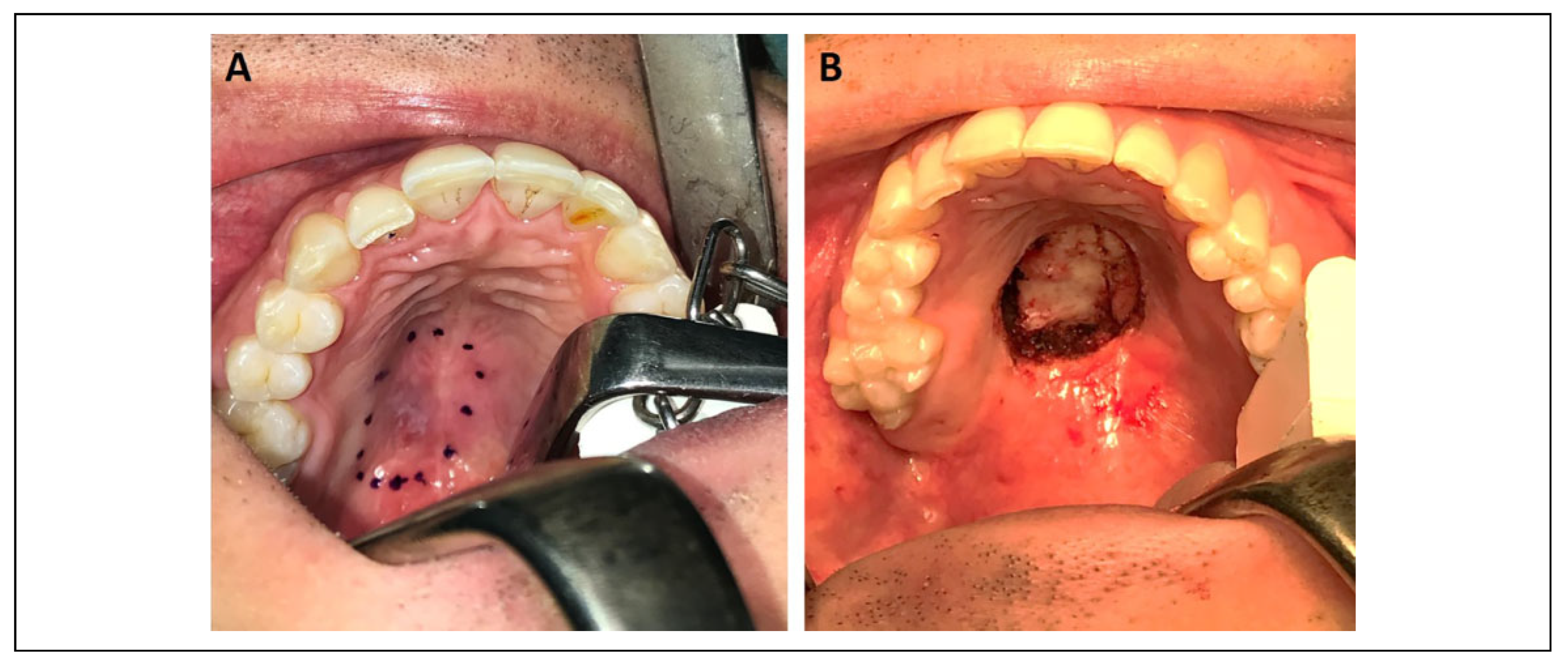
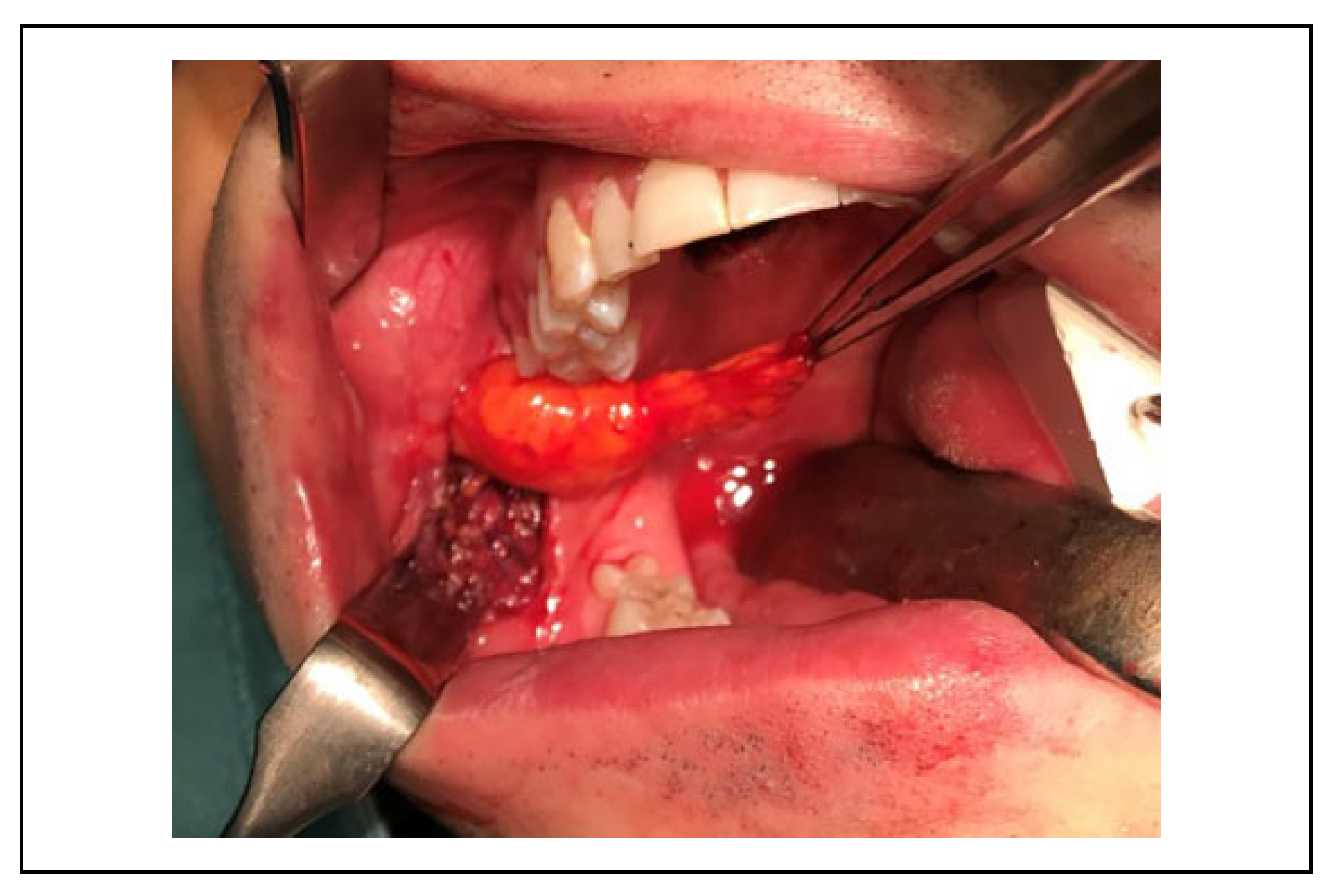
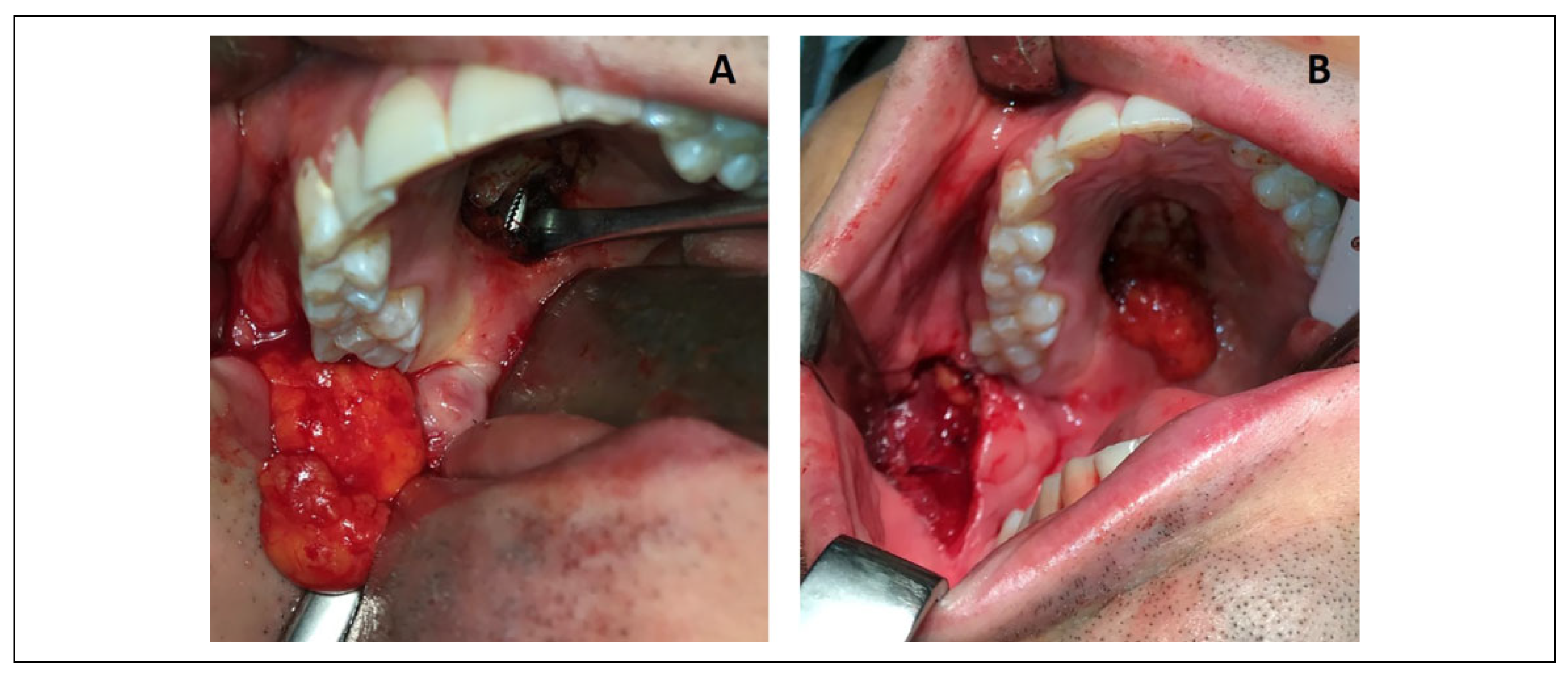
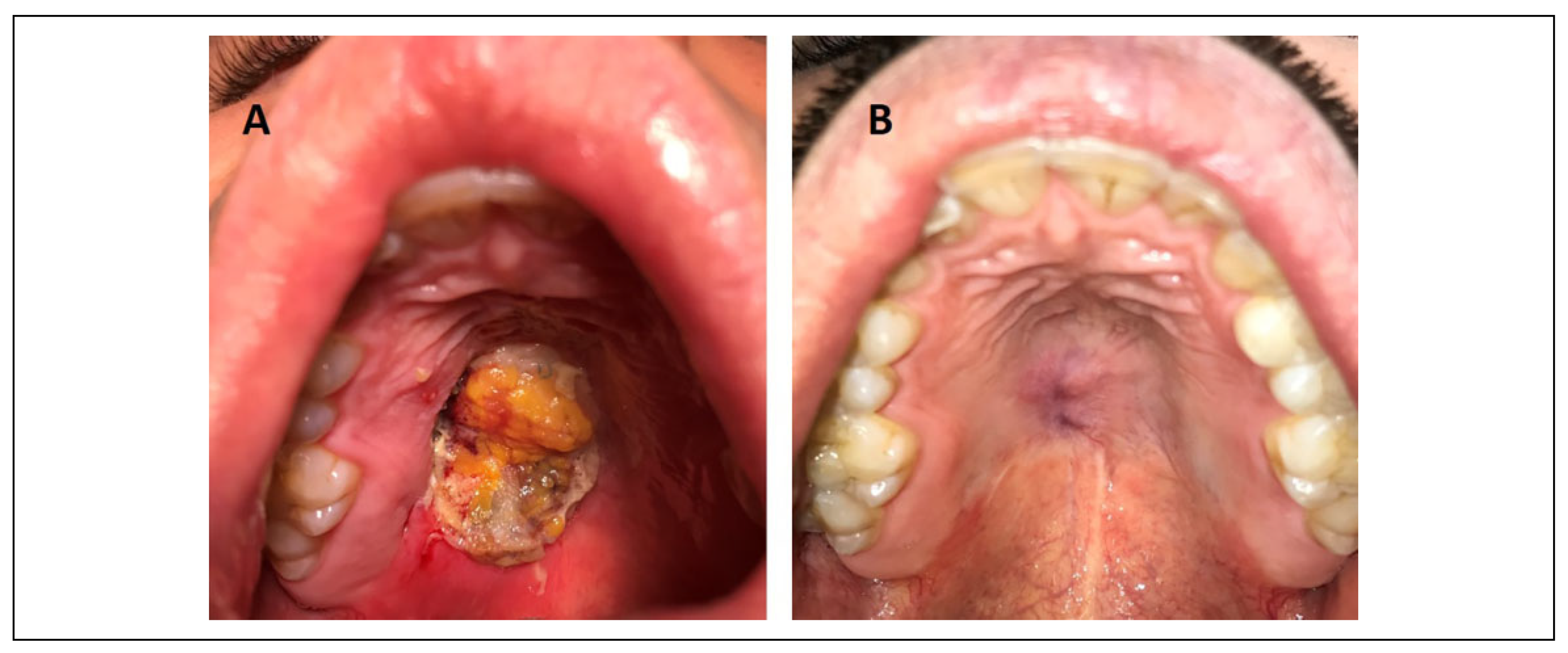
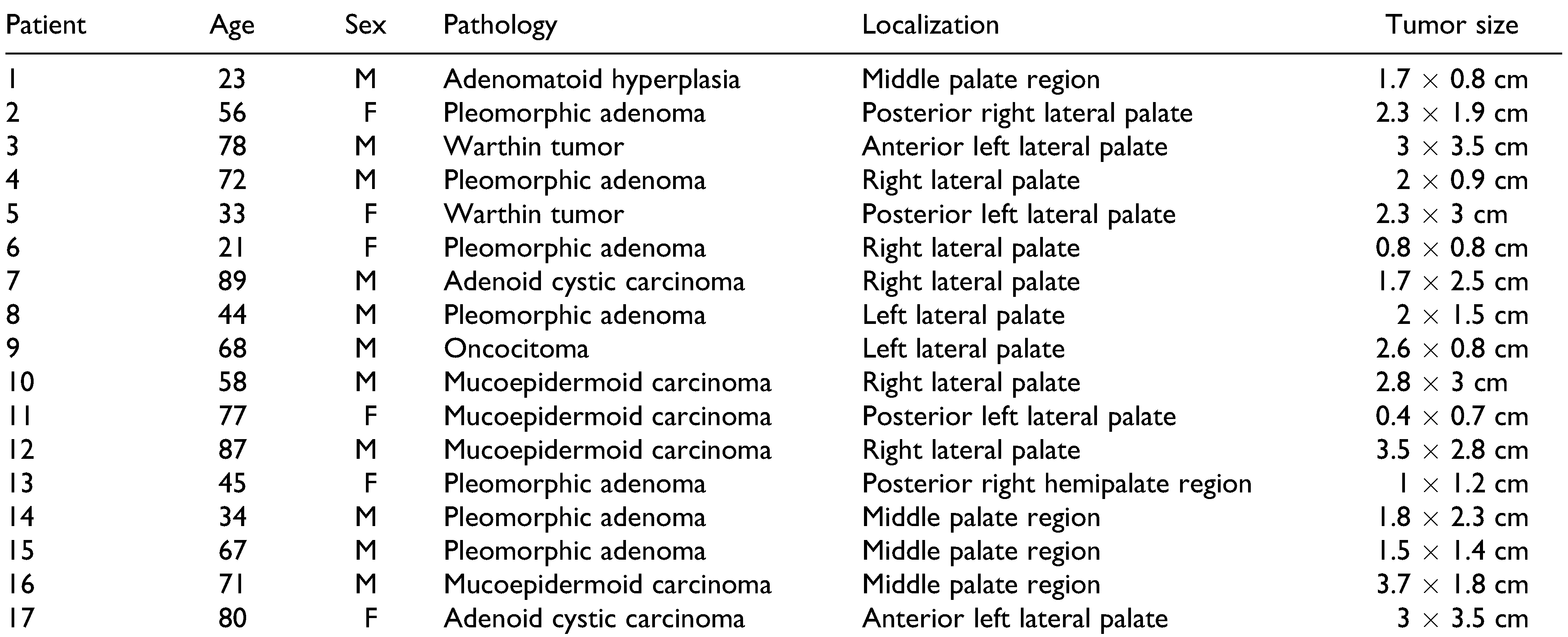 |
© 2021 by the author. The Author(s) 2021.
Share and Cite
Consorti, G.; Catarzi, L.; Messi, M.; Valassina, D.; Balercia, P. New Tunneled Buccal Fat Pad Flap for Palatal Reconstruction. Craniomaxillofac. Trauma Reconstr. 2022, 15, 90-94. https://doi.org/10.1177/1943387520988433
Consorti G, Catarzi L, Messi M, Valassina D, Balercia P. New Tunneled Buccal Fat Pad Flap for Palatal Reconstruction. Craniomaxillofacial Trauma & Reconstruction. 2022; 15(1):90-94. https://doi.org/10.1177/1943387520988433
Chicago/Turabian StyleConsorti, Giuseppe, Lisa Catarzi, Marco Messi, Davide Valassina, and Paolo Balercia. 2022. "New Tunneled Buccal Fat Pad Flap for Palatal Reconstruction" Craniomaxillofacial Trauma & Reconstruction 15, no. 1: 90-94. https://doi.org/10.1177/1943387520988433
APA StyleConsorti, G., Catarzi, L., Messi, M., Valassina, D., & Balercia, P. (2022). New Tunneled Buccal Fat Pad Flap for Palatal Reconstruction. Craniomaxillofacial Trauma & Reconstruction, 15(1), 90-94. https://doi.org/10.1177/1943387520988433



